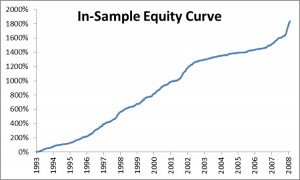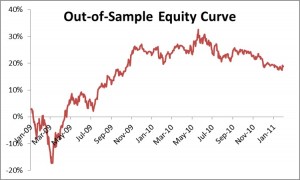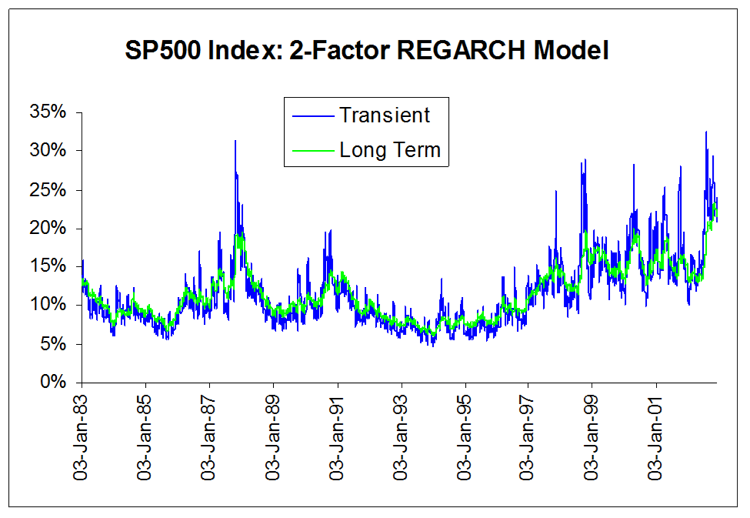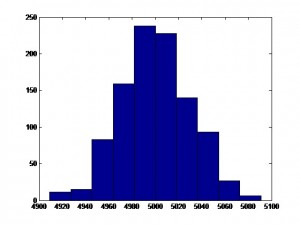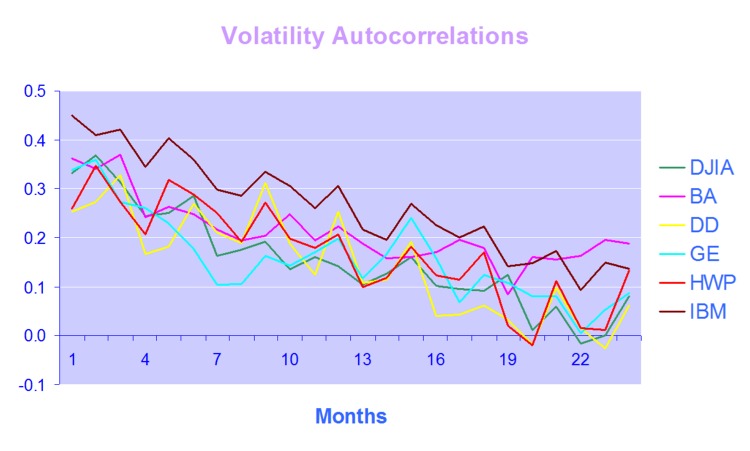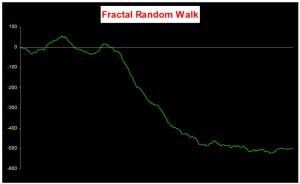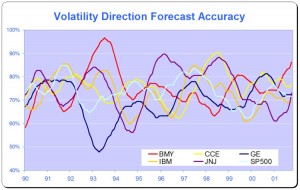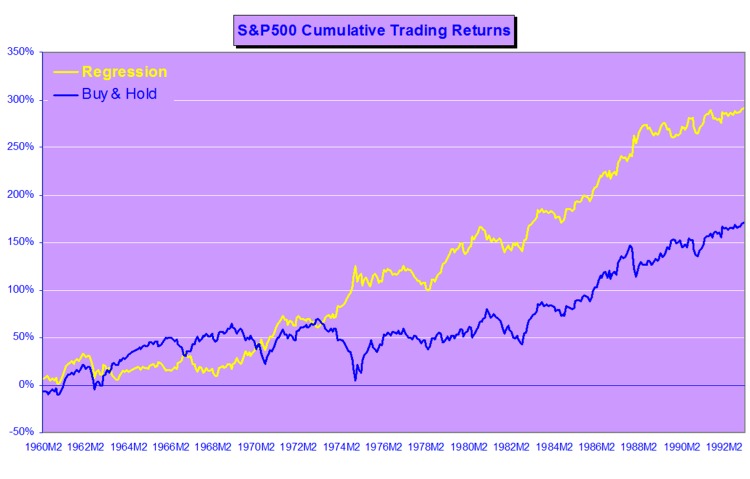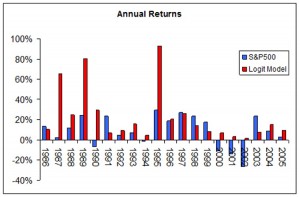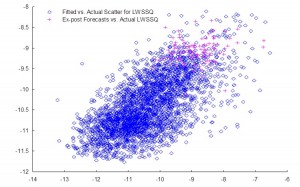What is Strategy Robustness? What is its relevance to Quantitative Research and Trading?
One of the most highly desired properties of any financial model or investment strategy, by investors and managers alike, is robustness. I would define robustness as the ability of the strategy to deliver a consistent results across a wide range of market conditions. It, of course, by no means the only desirable property – investing in Treasury bills is also a pretty robust strategy, although the returns are unlikely to set an investor’s pulse racing – but it does ensure that the investor, or manager, is unlikely to be on the receiving end of an ugly surprise when market conditions adjust.
Robustness is not the same thing as low volatility, which also tends to be a characteristic highly prized by many investors. A strategy may operate consistently, with low volatility in certain market conditions, but behave very differently in other. For instance, a delta-hedged short-volatility book containing exotic derivative positions. The point is that empirical researchers do not know the true data-generating process for the markets they are modeling. When specifying an empirical model they need to make arbitrary assumptions. An example is the common assumption that assets returns follow a Gaussian distribution. In fact, the empirical distribution of the great majority of asset process exhibit the characteristic of “fat tails”, which can result from the interplay between multiple market states with random transitions. See this post for details:
http://jonathankinlay.com/2014/05/a-quantitative-analysis-of-stationarity-and-fat-tails/
In statistical arbitrage, for example, quantitative researchers often make use of cointegration models to build pairs trading strategies. However the testing procedures used in current practice are not sufficient powerful to distinguish between cointegrated processes and those whose evolution just happens to correlate temporarily, resulting in the frequent breakdown in cointegrating relationships. For instance, see this post:
http://jonathankinlay.com/2017/06/statistical-arbitrage-breaks/
Modeling Assumptions are Often Wrong – and We Know It
We are, of course, not the first to suggest that empirical models are misspecified:
“All models are wrong, but some are useful” (Box 1976, Box and Draper 1987).
Martin Feldstein (1982: 829): “In practice all econometric specifications are necessarily false models.”
Luke Keele (2008: 1): “Statistical models are always simplifications, and even the most complicated model will be a pale imitation of reality.”
Peter Kennedy (2008: 71): “It is now generally acknowledged that econometric models are false and there is no hope, or pretense, that through them truth will be found.”
During the crash of 2008 quantitative Analysts and risk managers found out the hard way that the assumptions underpinning the copula models used to price and hedge credit derivative products were highly sensitive to market conditions. In other words, they were not robust. See this post for more on the application of copula theory in risk management:
http://jonathankinlay.com/2017/01/copulas-risk-management/
Robustness Testing in Quantitative Research and Trading
We interpret model misspecification as model uncertainty. Robustness tests analyze model uncertainty by comparing a baseline model to plausible alternative model specifications. Rather than trying to specify models correctly (an impossible task given causal complexity), researchers should test whether the results obtained by their baseline model, which is their best attempt of optimizing the specification of their empirical model, hold when they systematically replace the baseline model specification with plausible alternatives. This is the practice of robustness testing.

Robustness testing analyzes the uncertainty of models and tests whether estimated effects of interest are sensitive to changes in model specifications. The uncertainty about the baseline model’s estimated effect size shrinks if the robustness test model finds the same or similar point estimate with smaller standard errors, though with multiple robustness tests the uncertainty likely increases. The uncertainty about the baseline model’s estimated effect size increases of the robustness test model obtains different point estimates and/or gets larger standard errors. Either way, robustness tests can increase the validity of inferences.
Robustness testing replaces the scientific crowd by a systematic evaluation of model alternatives.
Robustness in Quantitative Research
In the literature, robustness has been defined in different ways:
- as same sign and significance (Leamer)
- as weighted average effect (Bayesian and Frequentist Model Averaging)
- as effect stability We define robustness as effect stability.
Parameter Stability and Properties of Robustness
Robustness is the share of the probability density distribution of the baseline model that falls within the 95-percent confidence interval of the baseline model. In formulaeic terms:

- Robustness is left-–right symmetric: identical positive and negative deviations of the robustness test compared to the baseline model give the same degree of robustness.
- If the standard error of the robustness test is smaller than the one from the baseline model, ρ converges to 1 as long as the difference in point estimates is negligible.
- For any given standard error of the robustness test, ρ is always and unambiguously smaller the larger the difference in point estimates.
- Differences in point estimates have a strong influence on ρ if the standard error of the robustness test is small but a small influence if the standard errors are large.
Robustness Testing in Four Steps
- Define the subjectively optimal specification for the data-generating process at hand. Call this model the baseline model.
- Identify assumptions made in the specification of the baseline model which are potentially arbitrary and that could be replaced with alternative plausible assumptions.
- Develop models that change one of the baseline model’s assumptions at a time. These alternatives are called robustness test models.
- Compare the estimated effects of each robustness test model to the baseline model and compute the estimated degree of robustness.
Model Variation Tests
Model variation tests change one or sometimes more model specification assumptions and replace with an alternative assumption, such as:
- change in set of regressors
- change in functional form
- change in operationalization
- change in sample (adding or subtracting cases)
Example: Functional Form Test
The functional form test examines the baseline model’s functional form assumption against a higher-order polynomial model. The two models should be nested to allow identical functional forms. As an example, we analyze the ‘environmental Kuznets curve’ prediction, which suggests the existence of an inverse u-shaped relation between per capita income and emissions.
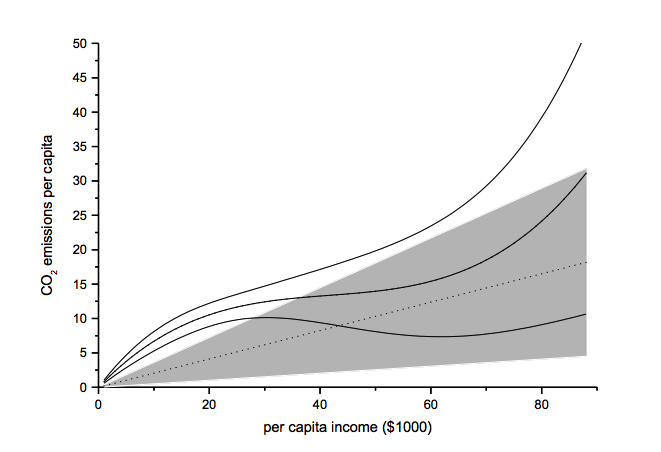
Note: grey-shaded area represents confidence interval of baseline model
Another example of functional form testing is given in this review of Yield Curve Models:
http://jonathankinlay.com/2018/08/modeling-the-yield-curve/
Random Permutation Tests
Random permutation tests change specification assumptions repeatedly. Usually, researchers specify a model space and randomly and repeatedly select model from this model space. Examples:
- sensitivity tests (Leamer 1978)
- artificial measurement error (Plümper and Neumayer 2009)
- sample split – attribute aggregation (Traunmüller and Plümper 2017)
- multiple imputation (King et al. 2001)
We use Monte Carlo simulation to test the sensitivity of the performance of our Quantitative Equity strategy to changes in the price generation process and also in model parameters:
http://jonathankinlay.com/2017/04/new-longshort-equity/
Structured Permutation Tests
Structured permutation tests change a model assumption within a model space in a systematic way. Changes in the assumption are based on a rule, rather than random. Possibilities here include:
- sensitivity tests (Levine and Renelt)
- jackknife test
- partial demeaning test
Example: Jackknife Robustness Test
The jackknife robustness test is a structured permutation test that systematically excludes one or more observations from the estimation at a time until all observations have been excluded once. With a ‘group-wise jackknife’ robustness test, researchers systematically drop a set of cases that group together by satisfying a certain criterion – for example, countries within a certain per capita income range or all countries on a certain continent. In the example, we analyse the effect of earthquake propensity on quake mortality for countries with democratic governments, excluding one country at a time. We display the results using per capita income as information on the x-axes.
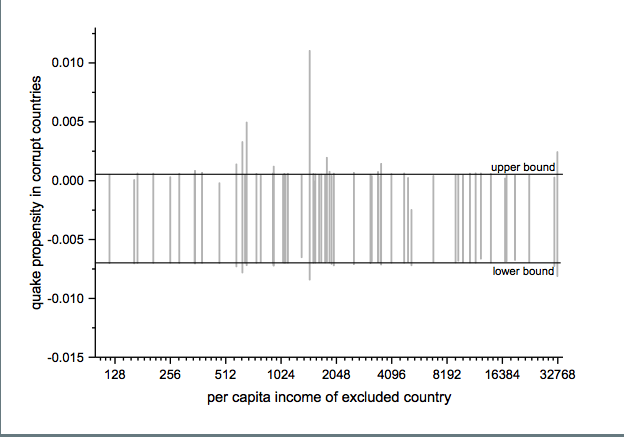
Upper and lower bound mark the confidence interval of the baseline model.
Robustness Limit Tests
Robustness limit tests provide a way of analyzing structured permutation tests. These tests ask how much a model specification has to change to render the effect of interest non-robust. Some examples of robustness limit testing approaches:
- unobserved omitted variables (Rosenbaum 1991)
- measurement error
- under- and overrepresentation
- omitted variable correlation
For an example of limit testing, see this post on a review of the Lognormal Mixture Model:
http://jonathankinlay.com/2018/08/the-lognormal-mixture-variance-model/
Summary on Robustness Testing
Robustness tests have become an integral part of research methodology. Robustness tests allow to study the influence of arbitrary specification assumptions on estimates. They can identify uncertainties that otherwise slip the attention of empirical researchers. Robustness tests offer the currently most promising answer to model uncertainty.




